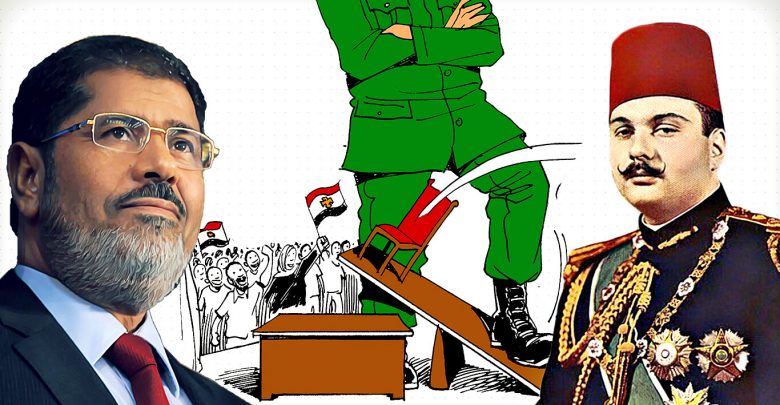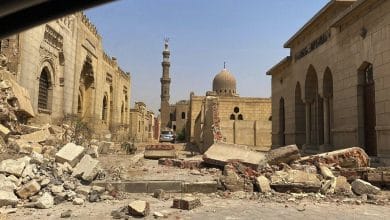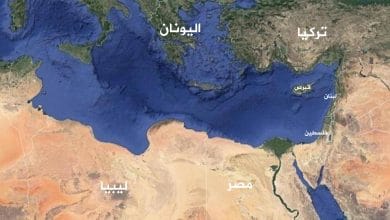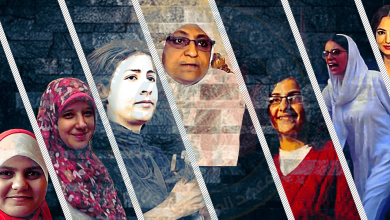
There have always been attempts within the Egyptian army for conducting change from within at times when some believe the institution deviated from its military doctrine due to policies adopted by head of the State. While some of these attempts were restricted to the intellectual level only, there were executive attempts of change using force. In this context, the Free Officers Movement in 1952 was an intellectual and executive movement of change. Also, during the 25 January Revolution 2011, some officers participated in the events, considering them a means for undertaking peaceful change.After the coup d’état on 3 July 2013, some members of the military institution chose the constitutional and legal track for carrying out peaceful change. Others adopted the armed track as an attempt to bring about a radical change within the military institution. In the face of these attempts, Sisi harassed anyone who opposed him or his regime, whether inside or outside the army.
In this context, this paper is aimed at monitoring and analyzing the movements of change within the Egyptian army from 1952 to 2018, as follows:
The first phase: from 1952 to the end of Abdel Nasser’s rule
This stage witnessed major attempts, starting with the July 1952 coup d’état, then the attempted coup against Nasser’s Revolutionary Command Council in 1953 and 1954, as well as the so-called silent conflict between Abdel Nasser and Abdel Hakim Amer.
The second phase: The Sadat era:
The era of Sadat witnessed a number of change attempts and clashes that ended with the assassination of Sadat in October 1981, most prominently:
First:
The dispute between the then-Defense Minister, Mohamed Fawzy, and President Anwar Sadat, that ended with dismissing Fawzy on 14 May 1971, and accusing him of trying to carry out a military coup against Sadat.
Second:
The Military Technical College organization in 1974, was one of forms of rebellion within the Egyptian army although it was not joined by army officers and was restricted to a number of students in military colleges.
Third:
The conflict between Field Marshal Ahmed Badawy, the then defense minister, and President Sadat, which ended with the killing of Ahmed Badawy and 13 army leaders in a military helicopter crash on Monday, 2 March 1981.
Fourth:
The assassination of President Sadat: The killing of President Mohamed Anwar Sadat was a kind of rebellion within the military carried out by a group of officers within the Egyptian army, for reasons including the Camp David Accord between Egypt and Israel and the crackdown launched by Sadat against Islamists and opponents in general.
The third phase: Beyond the January Revolution (from 2011 to 2018)
The 25 January Revolution has been the first popular attempt to dispose the military rule and the corruption systems associated with it during Mubarak’s 30 years of rule. However, only two years later the military institution took over again through a coup d’etat in 2013 with repressive practices that have been much worse than those practiced during the Mubarak era.
First: The Sisi military coup of 2013
Some say that from the early moment of the outbreak of the Egyptian January Revolution 2011, the military adopted a well-planned approach in order to re-position itself and take control of things again, which eventually took place through the coup that was led by Sisi in 2013. Following the military coup, Sisi sought to control the situation within the Egyptian army and the country as a whole, which he eventually did, taking full control of reins of rule in Egypt. Furthermore, he turned governance in Egypt from a rule of the military junta to a completely autocratic rule.
Second: The coup attempt of 2015
After the coup d’état in 2013, groups within the Egyptian army attempted to conduct change by means of force, and attempted to carry out a military coup against the Sisi regime. On 16 June 2015, 26 Egyptian officers were arrested and charged with attempting to overthrow the regime by force. The officers were of various ranks, including two brigadier generals, four colonels, three lieutenant colonels, seventeen majors and two captains.
Third: Some army officers join militant groups
As a result of the repressive practices carried out by the military leaders following the coup of July 3, 2013, some officers adopted jihadist thoughts and engaged in jihadist action in Egypt. While some of those officers joined militant groups, others founded militant entities to confront the regime, such as Hisham Ashmawi.
***
On the other hand, there have been other attempts that followed different paths in order to bring about the desired change, including intellectual, political or legal attempts, including:
First: Lt. General Saad al-Din al-Shazly
Many observers view Lt. General Saad al-Din al-Shazli as one of the reformist voices within the Egyptian army. They say al-Shazly wanted the October 1973 war to be mainly a war of liberation and not a tactical war to reach treaties with the enemy as President Anwar Sadat did. Therefore, he opposed the Camp David agreement with Israel in 1979, which changed the doctrine of the Egyptian army towards the Zionist entity. This was the main reason for Sadat to harass him and remove him completely from the military.
Second: Field Marshal Abdel Ghani al-Gamasy
In his memoirs entitled “Thoughts of a Fighter Who Contributed to the October 1973 War”, Al-Gamsy explained how he differed with the ruling leaders of the country during that period. He also explained how the leaders of the military institution changed the doctrine of the Egyptian army and how Sadat removed him from the military institution for adopting different views.
Third: Field Marshal Abdel-Halim Abu-Ghazala
Many military observers believe that Field Marshal Abdel-Halim Abu-Ghazala was a symbol of the honorable Egyptian military, who was seeking to put the Egyptian army in a privileged position that does not mainly depend on foreign aid. He sought to equip the Egyptian army with a sophisticated weapons and tried to create a manufacturing boom within the Egyptian army itself. He also considered Israel a strategic enemy and urged the political leadership against rapprochement with Israel in any way. This was mainly the reason for his expulsion from the Egyptian army in 1989.
Fourth: Army officers and the January Revolution (2011)
During the January Revolution 2001, a few officers participated in the revolution as a means of peaceful change that became available at that time to reform the military institution’s approach during the era of President Hosni Mubarak.
Fifth: Officers of 8 April
Officers of April 8 are a group of 21 officers of the Egyptian armed forces who took part in the demonstrations of Friday 8 April 2011 in their military uniform in Tahrir Square, and supported the demands of demonstrators that included choosing a civilian presidential council to lead the country and the return of the armed forces to their main job of maintaining security and defending thecountry.
Sixth: Trends of legal and constitutional change after the July 2013 coup
Adoption of legal and constitutional change means adhering to maintaining unity and coherence of the military institution, believing that using legal and constitutional methods can achieve the desired change. Among those who adopted this approach were:
1- Colonel Ahmed Konsowa
2- Lt. General Ahmed Shafiq
3- Lt. General Sami Anan
Conclusion
Some observers believe that those who wish to conduct radical change within the Egypt should not count on the Egyptian army as a main factor for such change, for three reasons:
First: Because Sisi has taken control of the current military council after removing all influential commanders and forming a new council that is completely loyal to him.
Second: Because of the restrictions imposed on army officers, especially the intermediary commanders.
Third: Because of the enormous privileges that the Egyptian army officers are now enjoying from the rank of lieutenant to the rank of general.
However, some believe that Sisi’s repressive practices may lead to increasing the number of those who wish to change the status quo within the Egyptian army at different levels within its structure. In fact, Sisi acquired the hostility of a number of officers because of the policies that he adopted after July 03, 2013, in management of the State, in addition to the abuse he practiced against those who opposed him from within the Egyptian army.
*Read the complete study in Arabic here




